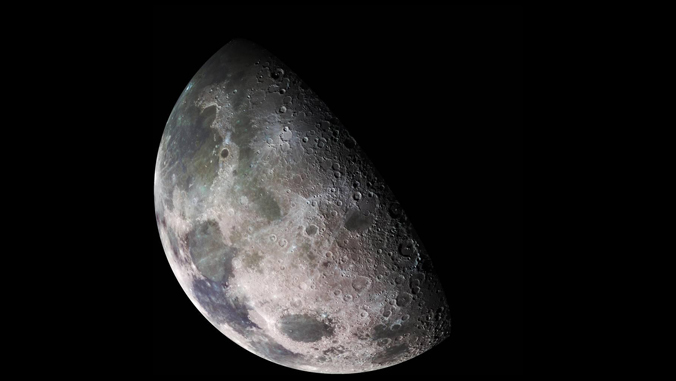
To improve participation and representation of Native Hawaiians and Pacific Islanders in planetary science, University of Hawaiʻi at Mānoa researchers will soon begin a project titled Ka mālamalama o ka mahina: Building pathways for Indigenous lunar science in Hawaiʻi.
The $150,000, two-year project is funded through a NASA Office of STEM (science, technology, engineering and mathematics) Engagement program, Minority University Research and Education Project for American Indian and Alaska Native STEM Engagement, which serves Native American and Indigenous communities.
“Since the Apollo era, Hawaiʻi has had an important role in lunar exploration and science,” said Emily Costello, lead investigator on the project and postdoctoral researcher in the Hawaiʻi Institute of Geophysics and Planetology (HIGP) at the UH Mānoa School of Ocean and Earth Science and Technology (SOEST). “Hawaiian basalts are often used as an analog for moon rocks and the moonwalkers of the Apollo missions were trained in Hawaiʻi. However, Native Hawaiians and Pacific Islanders have not been able to adequately share that history. With this project, we hope to build bridges, provide opportunities to participate in cutting-edge lunar science, and help to remedy this disconnect.”

The new project relies on collaboration between planetary scientists at UH Mānoa and HONUA Scholars, an organization founded to support Indigenous Hawaiians in college and graduate school enrollment and to empower Indigenous Hawaiians to become leaders in STEM.
“With this program, we want to create a space for Indigenous youth to experience what planetary science has to offer, as well as carve out a space for their voices to be heard,” said Chiara Ferrari-Wong, collaborator on the project and doctoral candidate at HIGP. “We are so excited to collaborate with our friends at HONUA Scholars for this project, and work together to create a pathway that uplifts and supports Indigenous students.”
See other stories on UH Mānoa becoming a Native Hawaiian Place of Learning.
Lunar skylight research illuminates pathway
Participating Native Hawaiian undergraduate and high school students will be connected with and supported by scientists at UH Mānoa to pursue innovative lunar science projects. Their work will contribute to understanding the present state of the lunar soil in regions around lunar lava tube skylights—pits on the Moon where lava tubes are thought to have collapsed. These features present a unique view of layering of basalt and have also been identified as locations for future human exploration and shelter.
“I am particularly excited because this funding supports Indigenous students presenting their work at the Lunar and Planetary Science Conference in Houston, Texas, every year,” said Costello. “The students will have the opportunity to meet possible future collaborators and mentors and everyone at the conference will benefit from these students’ voices.”
For more information, see SOEST’s website.
–By Marcie Grabowski

